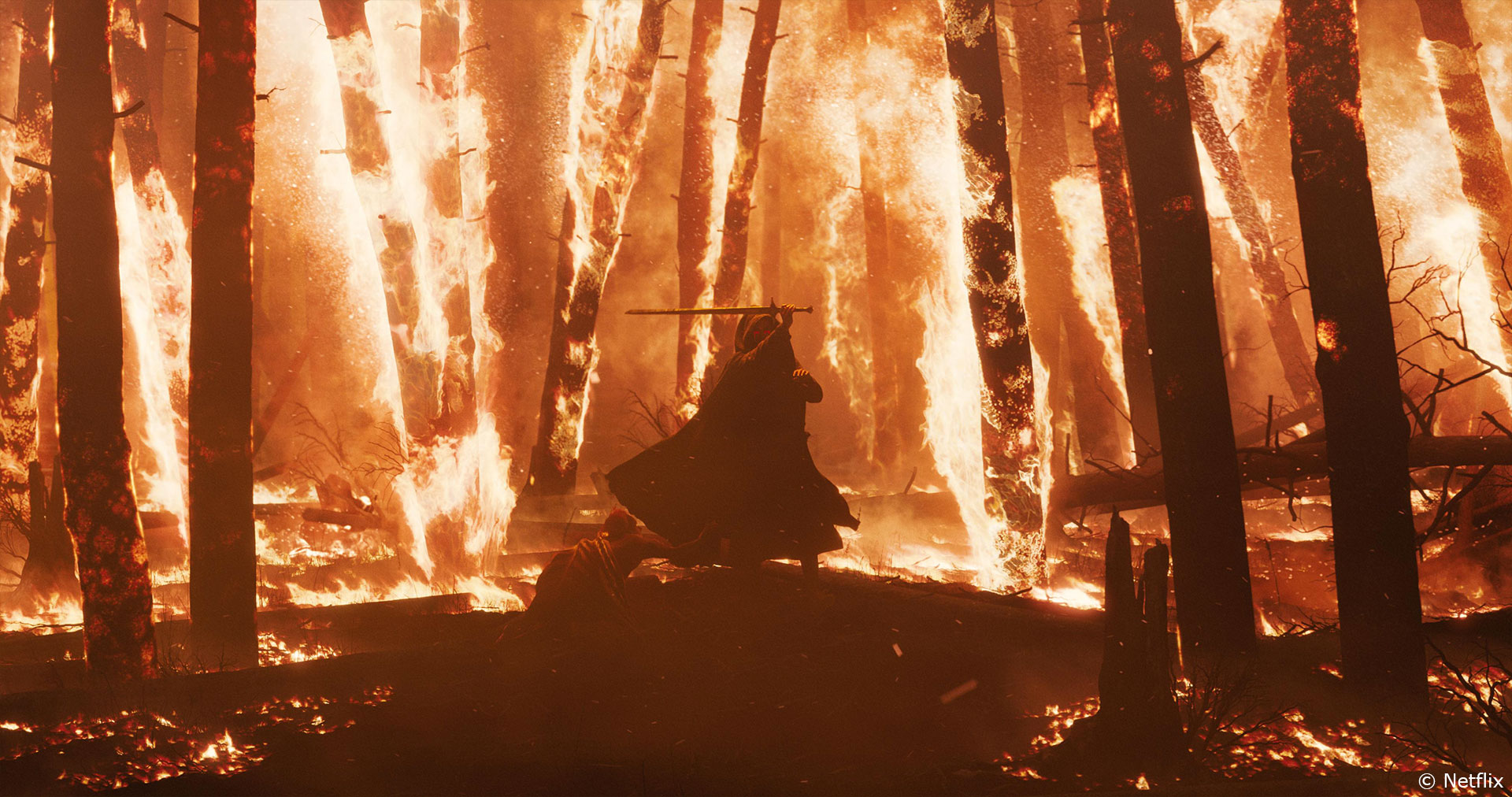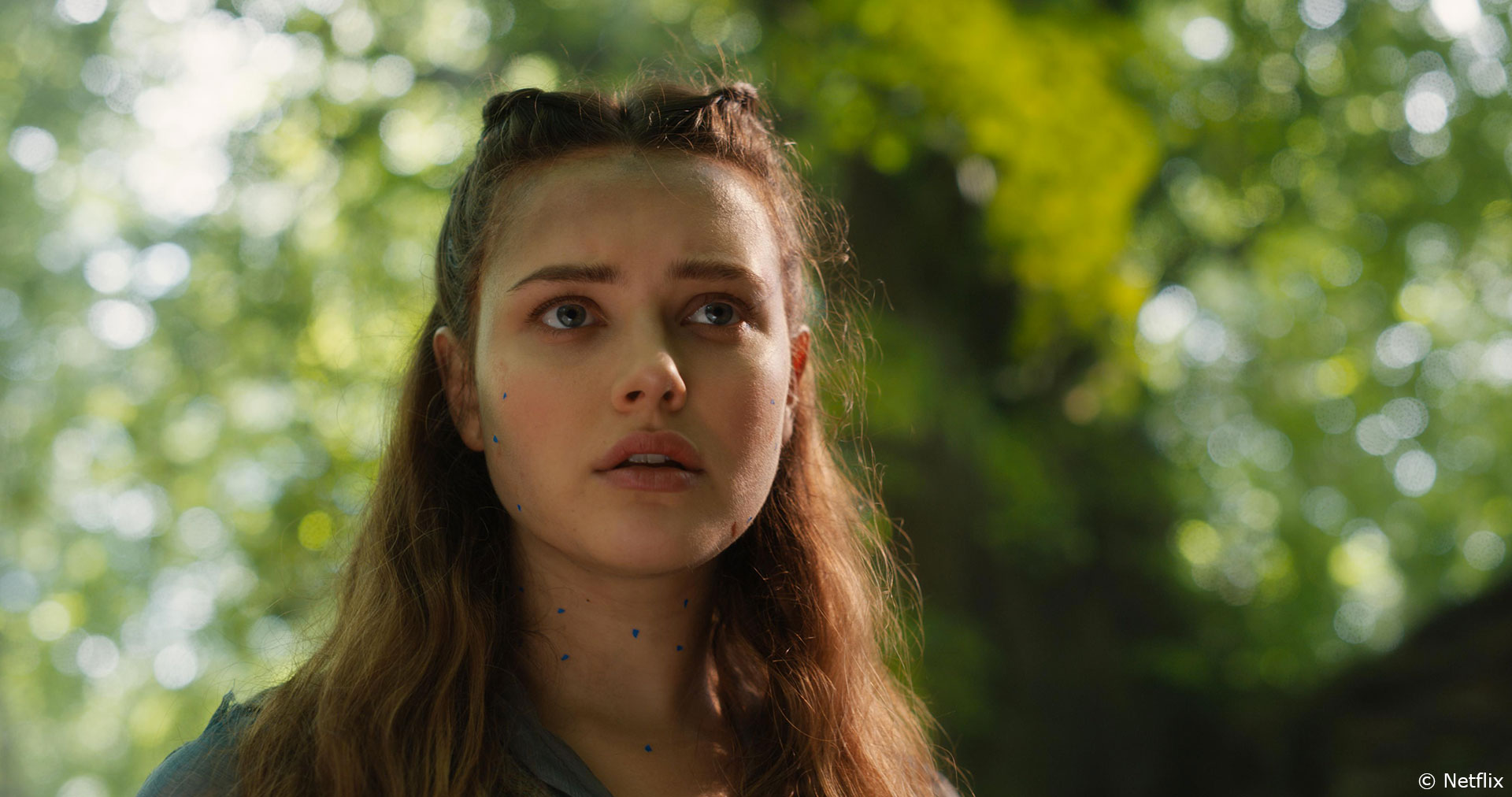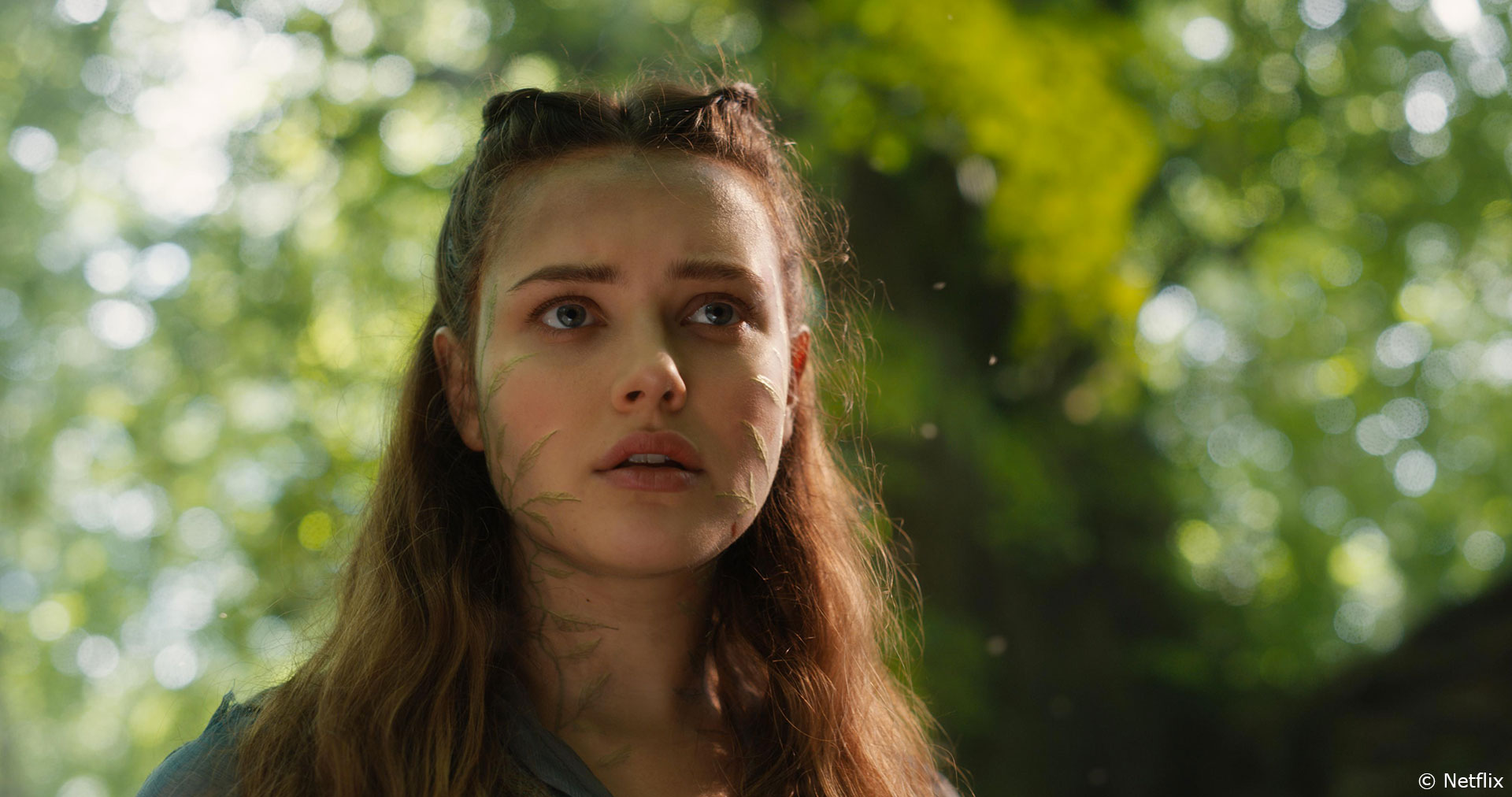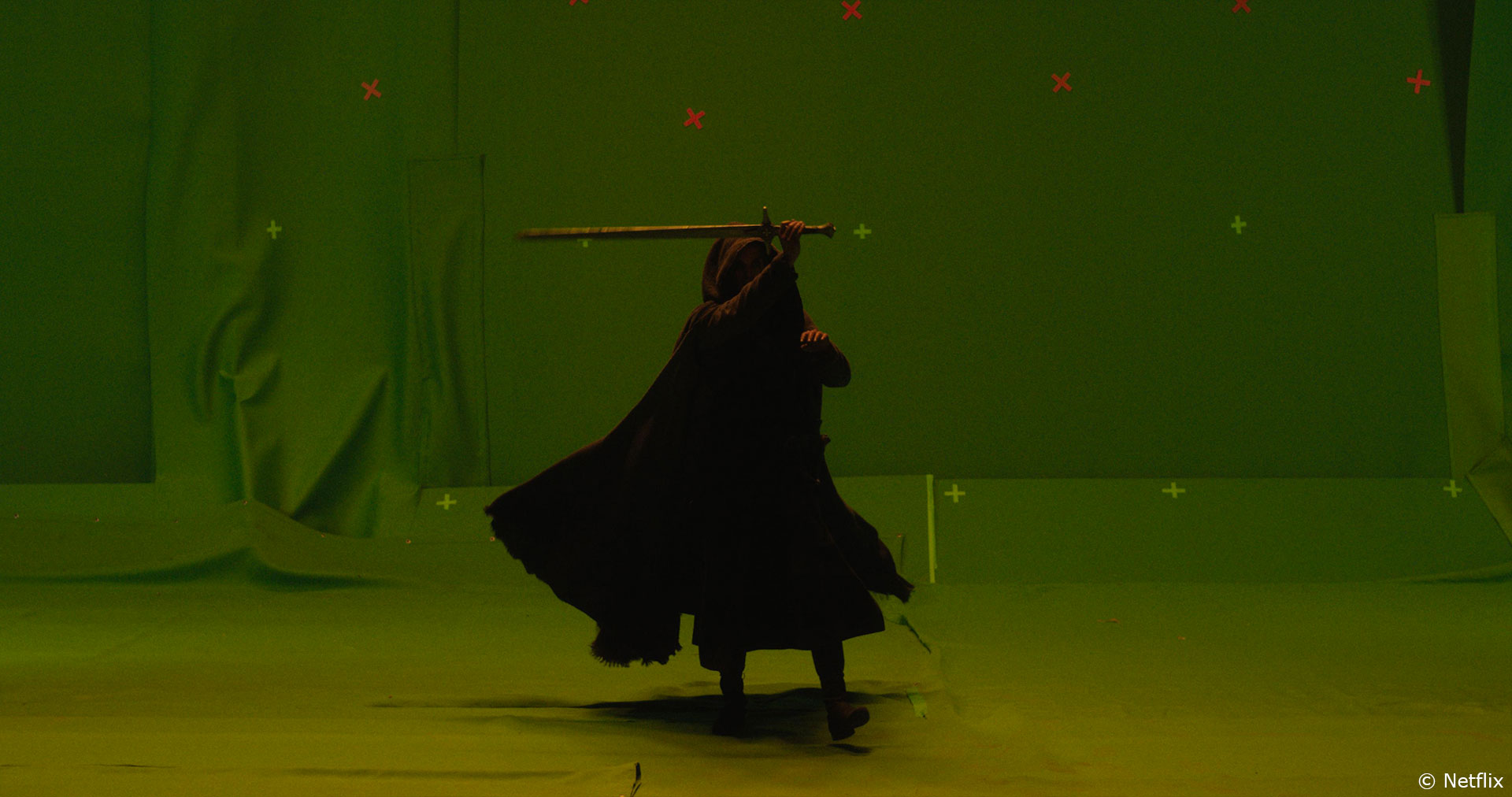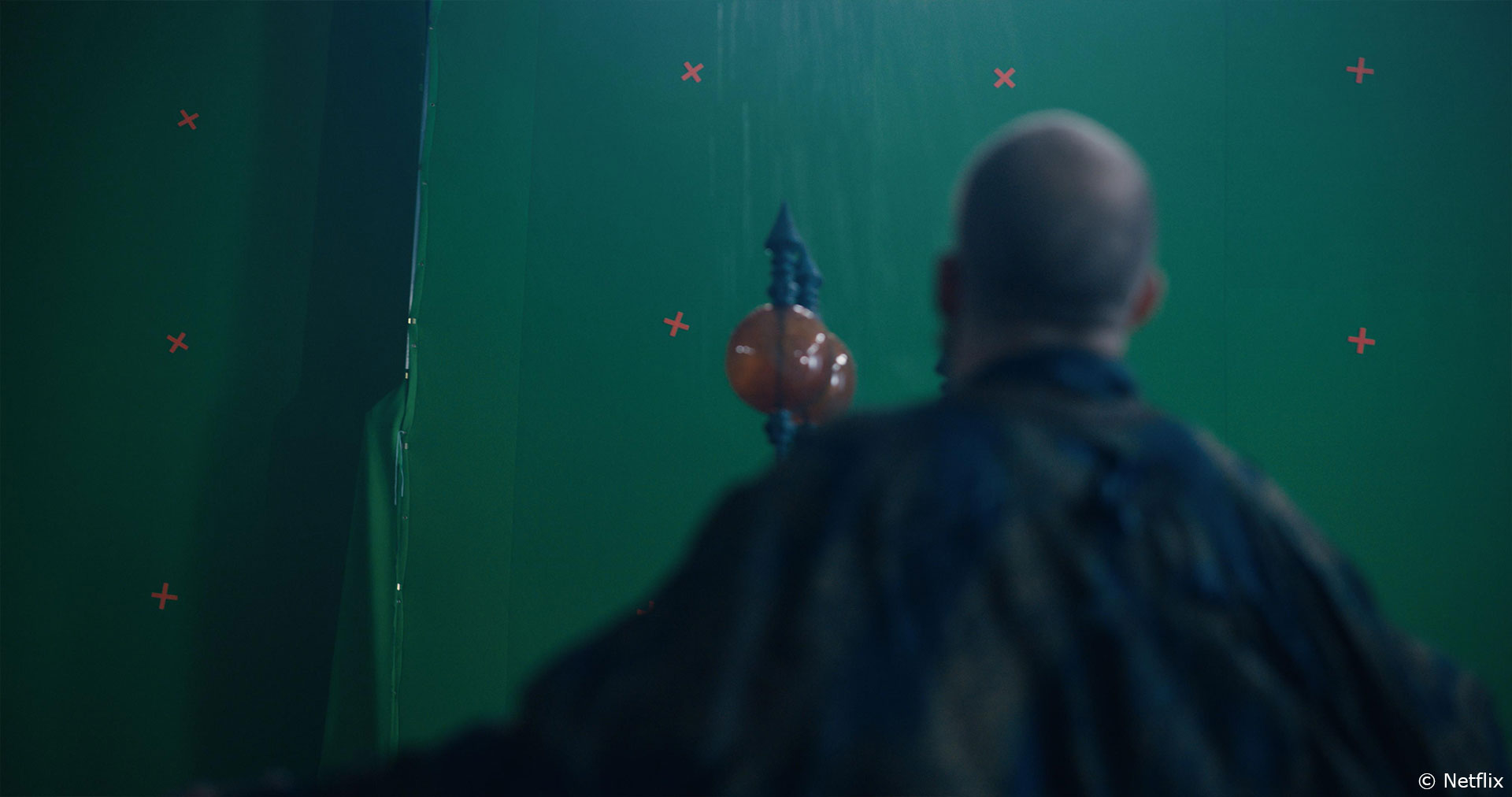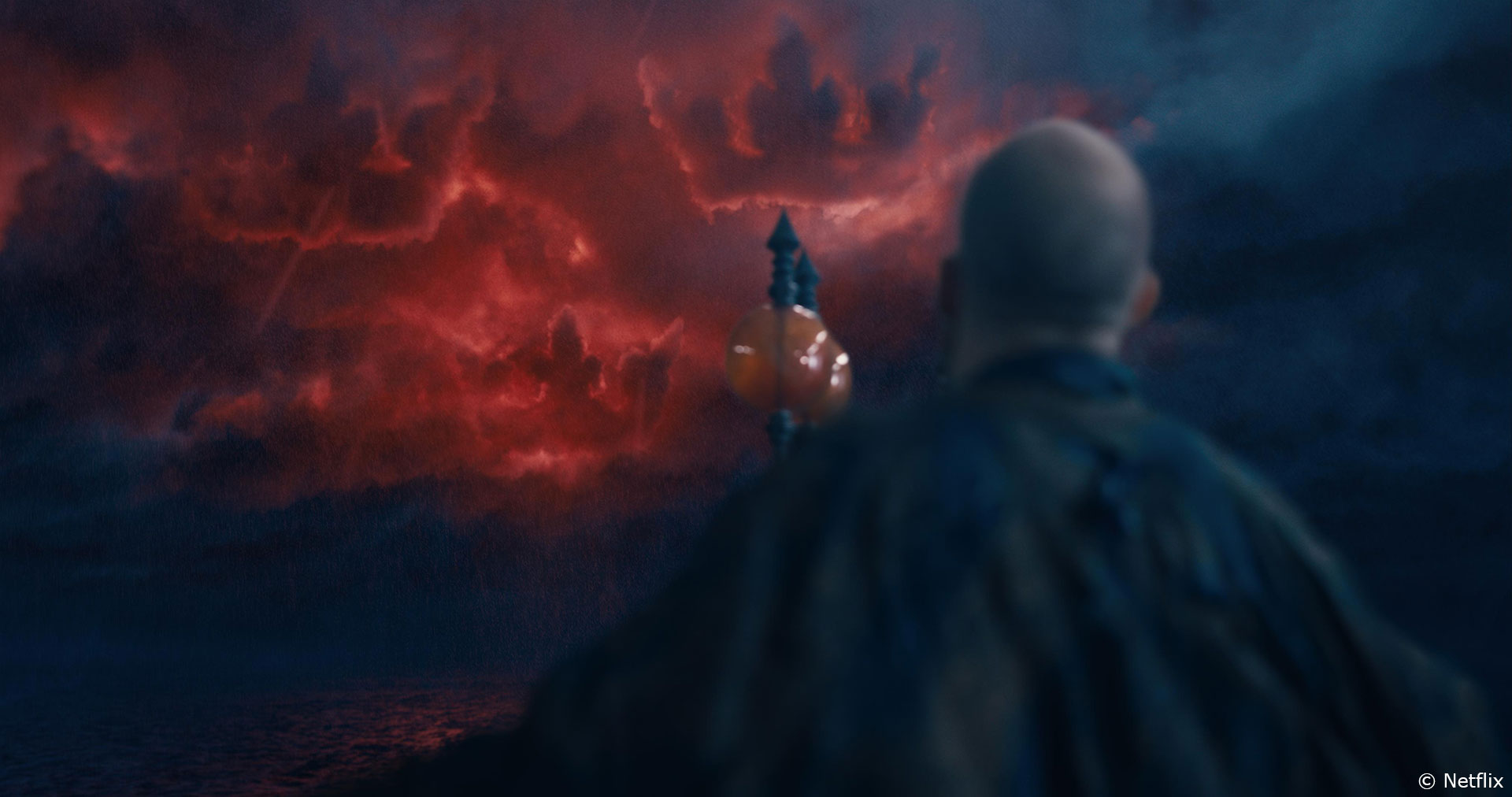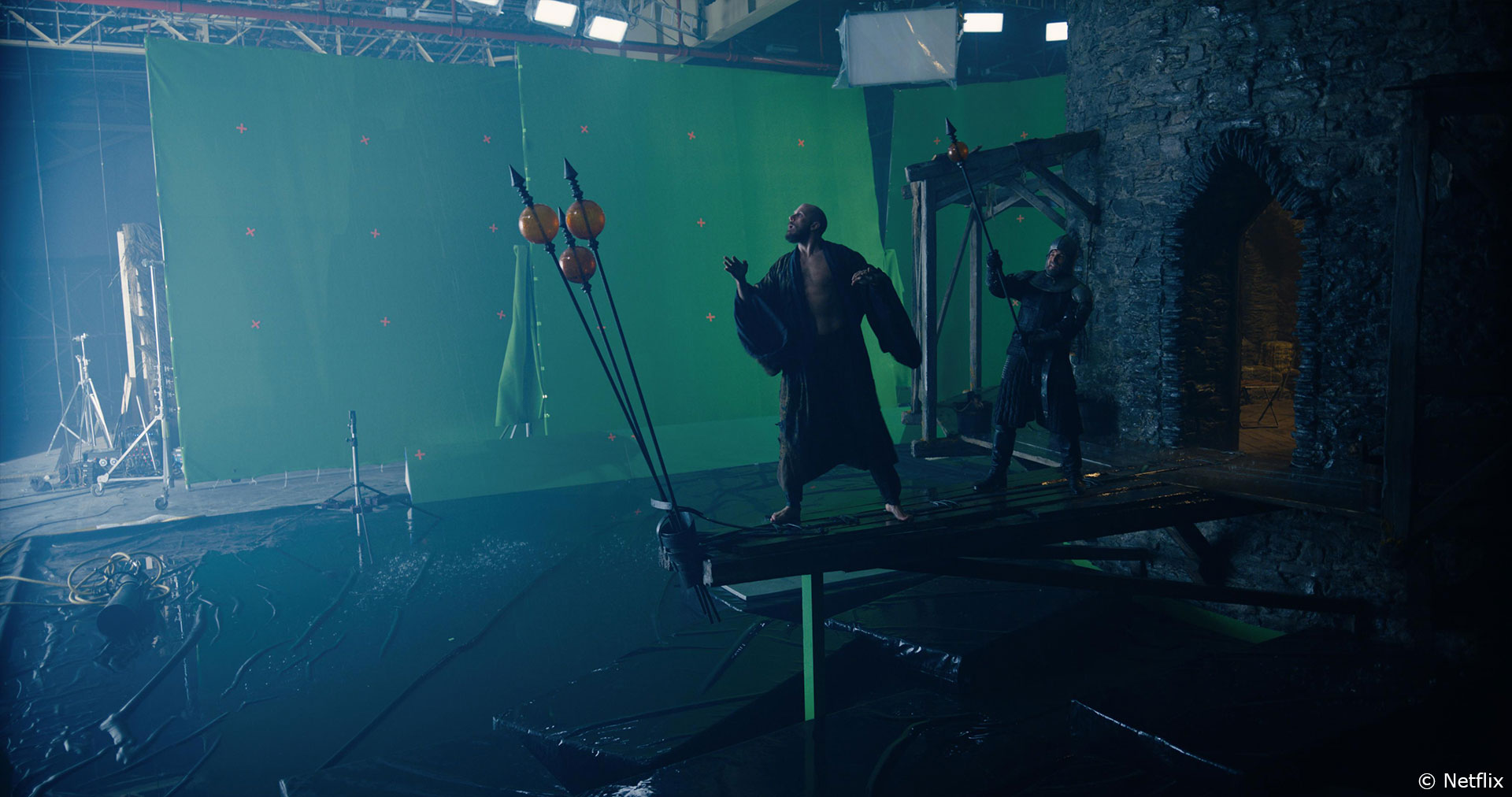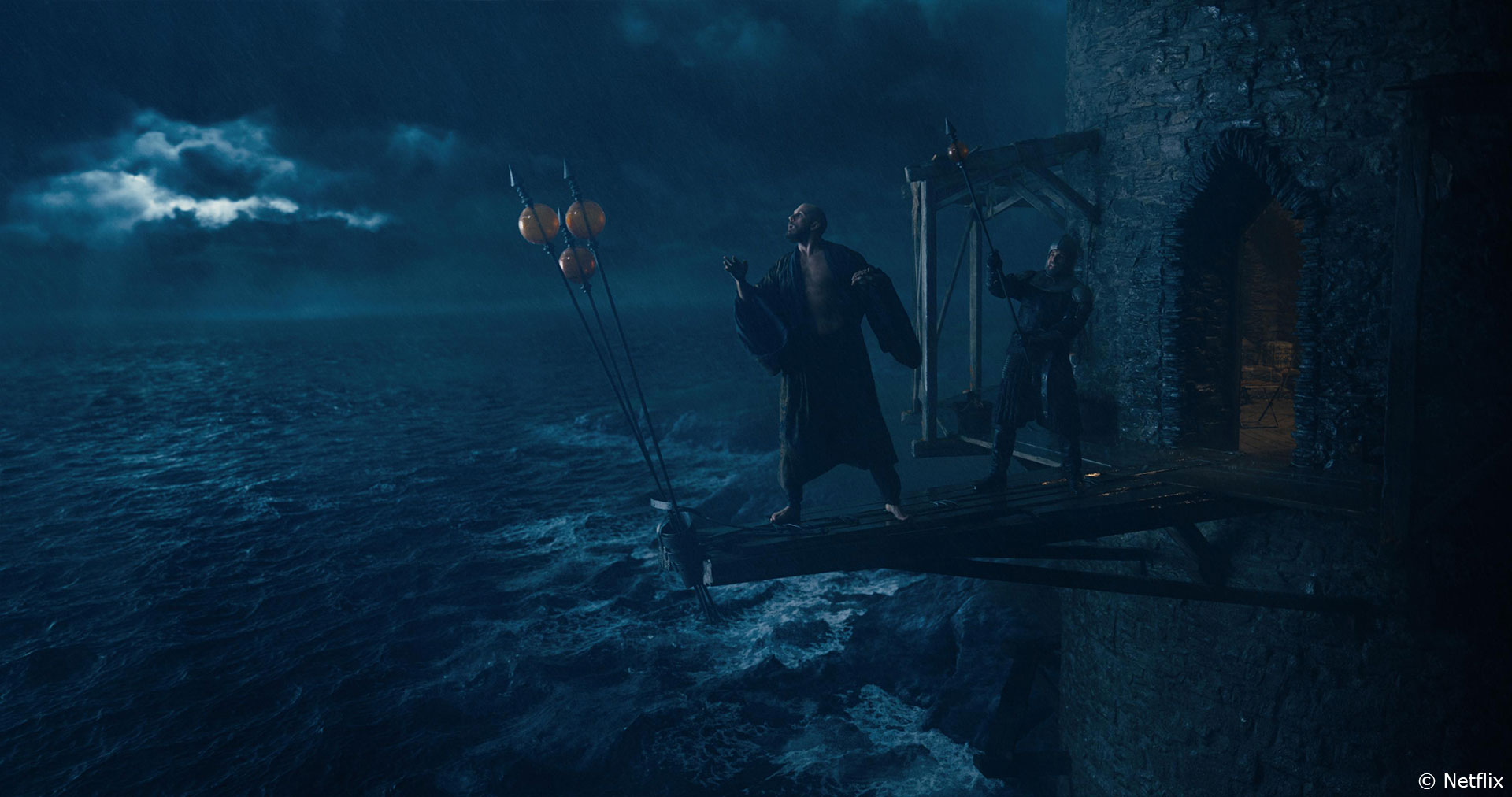Steve Murgatroyd began his career in visual effects more than 23 years ago. He has worked on many films including GLADIATOR, BLACK HAWK DOWN, DIE ANOTHER DAY and THE ALIENIST.
What is your background?
I studied fine art and started making video installations in my final year. Through that I was introduced to a couple of pieces of Quantel kit and started compositing different elements together in my work. And with this laughably limited exposure I was able to land my first job in VFX as a junior compositor.
How did you and Freefolk get involved on this show?
We knew Dave Houghton – CURSED VFX Supervisor from his early years at The Mill and had a lot of mutual respect for one another. We had also, quite recently, completed a large number of shots for Rebecca Vujanovic on THE ALIENIST, for which we won an Emmy, so I guess they both knew we would put maximum effort into every shot and be nice people to work with.
How was the collaboration with the Showrunners and VFX Supervisor Dave Houghton?
I think it worked really well. Whilst still at Langley Studios Harin Hirani (CG supervisor) and I made several visits there to help supervise bits of filming, when Dave was shooting elsewhere and to have various meetings to discuss concept work on our sequences. Including one with the legendary Frank Miller, which was obviously special. After shooting, Dave and Bek were literally camped in the building next door to us in Wardour Street. This made it very easy to get feedback.
What were their expectations and approach about the visual effects?
As you’d expect on such a visually rich show as CURSED, the expectations for the VFX were very high. There were so many elements imagined by the writers that were simply impossible to realise in camera and it was our job to create all these wonderful and varied components.
How did you organize the work with your VFX Producer?
Meg Guidon and I had known each other for many years but never actually worked on a project together, so it was lovely to do this one. We worked very closely on the bids and with getting the crew together at the beginning and throughout and Meg did most of the communication with Bek and her production team.
What are the sequences made by Freefolk?
We worked on a fair number of sequences but I guess the the stand out ones in terms of volume of work would be the Merlin storm sequence and the Fey camp, which appeared in two episodes and of course the Fingers of Airimid.
Can you elaborate on the design and the creation of the Fingers of Airimid?
As they were quite an integral part, visually, of the power of the Fey, it was very important for Tom and Frank and the directors to get these absolutely perfect. There was an initial concept design which was rather decorative (and I really liked) and then there was a prosthetic made, which we were initially asked to copy. Then we tried out a fair number of different designs before eventually settling on two, each depicting a different mood, either magical or angry. Once we got going on them though, it became a bit of a production line and we sailed through them.
Did you receive specific indications and references for the Fingers of Airimid?
Yes, the concept and prosthetic I mentioned above though the design evolved considerably through iterations before arriving at the final look.
How did you handle the challenge of the matchmove with her face?
We assessed each shot individually as to how we would approach the tracking. If there wasn’t too much parallax in Nimue we would try and use vector tracking as it gave you a lot of the subtle skin movement around the mouth and neck that would be impossible to get otherwise. For shots where Nimue turned her head a lot, we used geometry tracking and then for some of the more difficult shots it was a combination of both techniques as well as some manual work.
Can you tell us more about the animations of the Fingers of Airimid?
Initially the growth of the fingers was designed using some procedural growth patterns in Houdini and using the generated textures as displacement maps. Then to make the process more flexible and streamlined we moved the whole workflow over to Nuke. In Nuke we were able to manipulate the composition of the design; change the speed and intensity. We would then use the generated maps from Nuke to render out some displacement effects on face geometry in Maya to give us the 3 dimensional look.
There is an impressive sequence when the Weeping Monk is in the middle of a burning forest. Can you explain in details about its creation?
The Monk himself was shot against a green screen, so the entire environment that you see was created in CG. Harin Hirani – Freefolk Head of CG explains: We started by building a forest around the Monk composed of standing trees, fallen trunks, patches of grass and shrubs – designed in such a way that it would give interesting silhouettes against the fire we would be creating. We extended the live action camera in order to create a contra zoom effect as the Monk is revealed and animated a Moonwing creature in the foreground that gets slashed by the Monk’s sword stroke and also some background Moonwings falling in flames from the trees. All of the geo was exported from Maya to Houdini where we did all the FX elements. The final rendered elements were then comped in Nuke.
How did you handle the fire and the various FX simulations?
The challenge for us was how we would work with a shot that was 40 seconds in length. Fire and smoke effects are time consuming in nature due to the time it takes to simulate – and the sims generate a huge amount of data on such a long shot. We therefore broke the effects down into smaller chunks that we could loop over the course of the shot without that process being noticeable. This allowed us to iterate quicker when we were developing the look of the fire. We still amassed 16TB of sim data as we had multiple elements such as fire, smoke and embers.
Can you elaborate about the creation of the full CG Fawn?
This was very much Harin’s baby – creature work being his absolute favourite discipline. We were given an initial reference image as to the age and look of the fawn required for the shots. We also had a taxidermy reference fawn. We needed to base our CG fawn on this, as our CG shots needed to cut with some fully live action shots using the real carcass prop. zBrush was used to create the initial model and internal elements such as the skeletons and muscles. We then developed a muscle system in Houdini as we were unsure how much movement would be required for the sequence and felt the full musculature would be needed to give us the realism we were after. Yeti was then used for the groom process.
How did you create the Pendragon castle?
We created the tower where Merlin and his spell chamber exist and for this we simply extended the Lidar taken from the set.
Merlin is doing a ceremony on the top of the castle. How did you create the storm and the ocean?
The stormy water was created using a combination of procedural spectral patterns and a flip fluids solver inside Houdini. Flip fluids were used in the foreground areas where the water needed to interact with the coast shoreline where we could generate foam and spray as the waves hit the rocks.
The clouds themselves were created using procedural geometry and then simulated as fluids in order to get a rolling effect. With varying levels of detail depending on distance to camera. Rain FX and mist passes were also created to add depth and atmosphere to the storm.
Did you use procedural tools for the storm and the lightnings?
One of our FX artists created a lightning bolt tool in Houdini which allowed us to art direct the design of the lightning bolts. The tool allowed us to position the start and end points, as well as control the number of branches and thickness. We would then use these bolts as geometry lights that could illuminate our volumetric cloud sims internally giving us realistic looking lightning patterns within our clouds. We could then animate the lighting, switching on and off in the compositing software.
Can you tell us more about the other environments you create?
One of the bigger environments we created was for the Fey camp. We had a Lidar scan of the set build and used this, as well as extending the set in large areas in order to create a vast gorge-like cavern that extended high into the air. We then dressed the environment with 3D moss and foliage and populated it with live action sprites and CG elements – like the Moonwings flitting across the gorge.
Which sequence or shot was the most challenging?
The Weeping Monk sequence was tricky because of its length and rendering time but the storm sequence with Merlin was challenging because of the number of different angles we had to cover, We never had any specific background footage for the cliffs and landscape but we were determined to match the daytime shots of Pendragon Castle, created by another post house. We analysed some drone footage that Dave had managed to capture between shots and was able to create our own, matching shoreline from this.
Is there something specific that gives you some really short nights?
I always; touch wood – sleep really well and was only ever really worried about the Weeping Monk shot. Not because I didn’t think we could deliver what was discussed but because I always feared we wouldn’t be able to deliver the shot in time, if people changed their mind about what they wanted from it. Fortunately, that didn’t happen.
What is your favorite shot or sequence?
The introduction of the Weeping Monk in the burning forest is by far my favourite. Partly because it had the difficult task of being required to be both graphic to Frank Miller’s demanding eye and also realistic, and partly because I know what a huge effort it was to realise this almost completely CG, 40 second shot.
What is your best memory on this show?
I don’t know if it’s my best but I think I’ll always remember having to finish the show in Lockdown. It should have been more difficult than it was but our amazing line producer, Giacomo Sotgiu, was so on it. He stuck to a rigid routine of rounds and dailies (using video of course) and it all ran so smoothly – I was really impressed!
How long have you worked on this show?
I think we did about 9 months on CURSED.
What’s the VFX shots count?
I think we got close to 200 but that doesn’t give a true account of our work because we had so many long shots.
What was the size of your team?
It was constantly changing, but on average we had 2-3 Houdini artists, 4-5 Maya and 6 Nuke compositors, along with myself, CG supervisor Harin Hirani, the production team and one dog named Finix.
What is your next project?
We’ve already completed our next project! Done almost entirely in Lockdown which was THE THIRD DAY. A HBO/Sky production starring Jude Law. We’ve been bidding (and rebidding because of social distancing restrictions on shooting) on a few projects but like many people are waiting for shooting to restart.
What are the four movies that gave you the passion for cinema?
As I mentioned earlier, it was through using digital compositing techniques in my own work that I came to be working in VFX but films have always inspired me and continue to. Just recently I stumbled upon APOCALYPSE NOW on TV and was instantly transported back to the very first time I watched it, projected in an art house cinema, when I was still a student. The level of craftsmanship involved in creating some of the helicopter scenes was both mind boggling and awe inspiring. And I think what is wonderful about filmmaking is that, although it is undeniably the most collaborative medium, you can so easily appreciate a film for all or just one of it’s disciplines. KIND HEARTS AND CORONETS is one of my favourite films simply because of Alec Guinness’s performance as nine members of the same family. I’ve sat through far too many Marvel movies because I have two boys (thirteen and ten) I find them very formulaic but it’s impossible not to be impressed with the Marvel Universe and the quality and sheer number of visual effects shots required to pull it off. Alfonso Cuaron’s GRAVITY, justifiably swept the boards at the Oscars and because of what I do I was understandably impressed by the VFX but it is probably the utterly brilliant sound that I will most remember it for.
In lockdown, my family and I recently had our own little Christopher Nolan festival. It was very much by accident, searching for films that would be suitable and entertaining for me, my wife and the boys. We watched DUNKIRK to mark the 75th anniversary of WWII, INTERSTELLAR as it seemed rather pertinent with the sense of impending Covid 19 doom and INCEPTION because, well I can’t quite remember but what I do remember is trying to work out why these we’re all so successful pieces of filmmaking. Christopher Nolan is obviously a huge part of it but I guess it comes down to the fact that he managed to assemble so many good talented people, doing their job to the best of their ability. And that’s always something to get impassioned by.
A big thanks for your time.
WANT TO KNOW MORE?
Freefolk: Dedicated page about CURSED on Freefolk website.
Dave Houghton: My interview of Dave Houghton, Overall VFX Supervisor.
Netflix: You can watch CURSED on Netflix now.
© Vincent Frei – The Art of VFX – 2020


